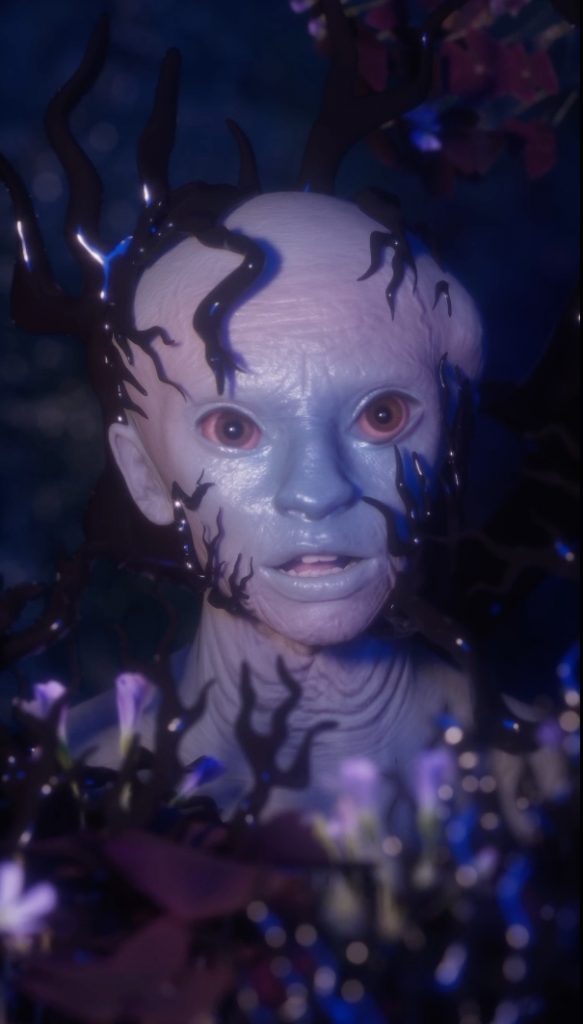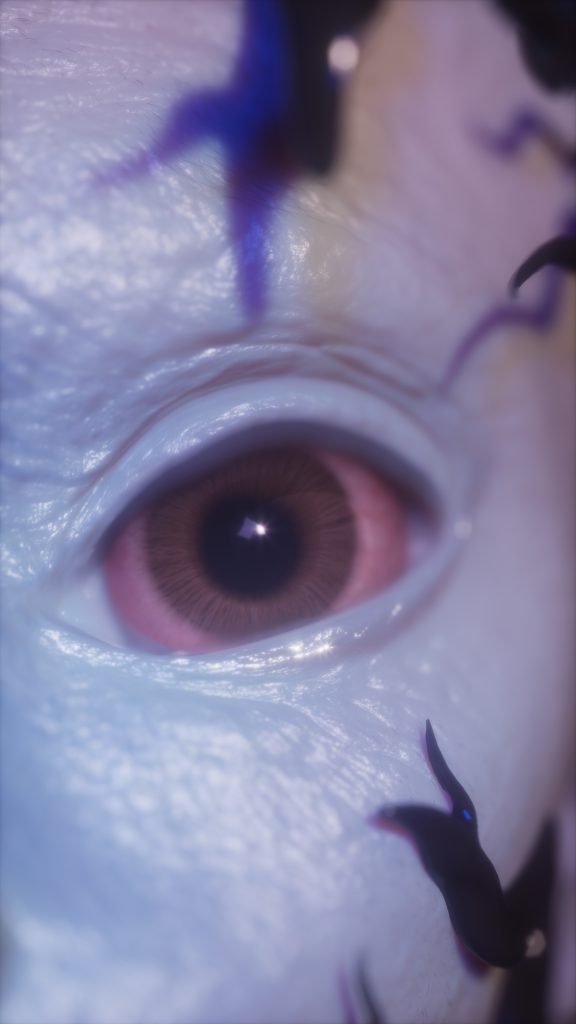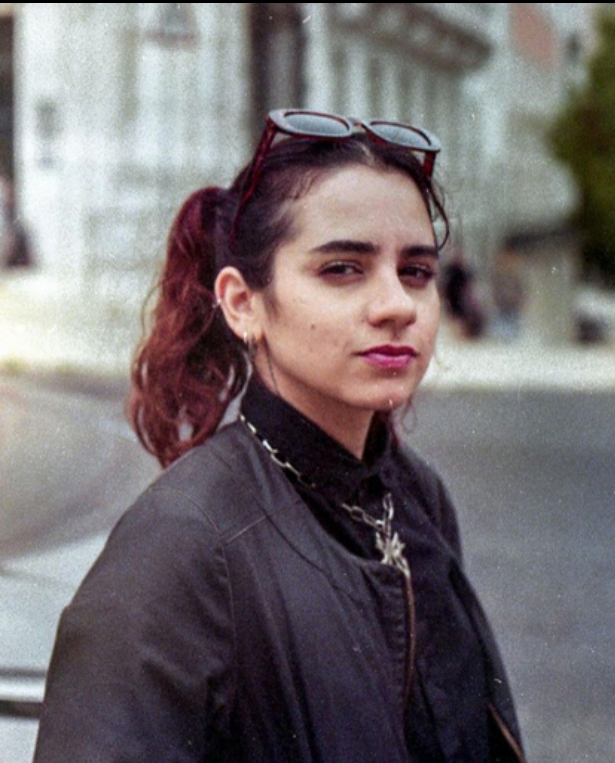JOAQUINA SALGADO
Generazione Critica: Your artistic practice merges real-time technologies, digital sculpture, and photogrammetry to create XR experiences, interactive virtual spaces, and A/V performances. How did your interest in these tools and processes develop, and what central themes guide your artistic exploration?
Joaquina Salgado: My interest in real-time technologies began from a desire to work with systems that are alive — or at least reactive. Coming from a background in media arts, I was always drawn to the idea that space could respond to a body, a voice, or even randomness. Tools like game engines, photogrammetry, and motion capture allowed me to explore this tension between control and emergence — creating environments that are open-ended.
Photogrammetry, in particular, became a way to archive and reanimate — to capture fragments of landscapes or gestures and then re-contextualize them within digital ecologies. I’ve used this technique to reflect on the strange afterlives of data. Over time, these experiments evolved into speculative narratives and interactive systems.
These days I’m mostly thinking about intersections of philosophy and science. Or to be more precise, the speculative—constructing scenarios and artifacts that illuminate unseen entanglements and encourage reflection on how technology might enable more equitable and interconnected futures, with a queer feminist lens.
Ultimately, these tools allow me to build worlds — not just as containers for content, but as performative, unstable systems that invite the viewer (or player) to participate, intervene, or simply observe things unfold.
GC: Avispish presents a character that exists at the intersection of synthetic and organic, blending digital textures with an almost tangible presence. What was the conceptual starting point for this work, and how does it reflect your ongoing investigation into human nature and internal programming?
JS: The conceptual core of Avispish was born from a moment of violence: during a demonstration on International Women’s Day in Switzerland (2023), I, along with many other women, was subjected to facial capture by police forces. It was a surreal experience — having one’s identity reduced to data under the guise of security, on a day meant to affirm our rights.
Avispish asks: What does it mean to exist in a world where every expression, every flicker of emotion, can be harvested, stored, and turned against you? In response, I chose to use the same technologies — facial capture, AI motion tracking — to reclaim and reframe that data. The project features looped digital heads, sculpted from facial captures and driven by motion data recorded in the studio. Each one carries fragments of our anonymous conversation, recorded after the event — sharing stories not just of that day, but of the long histories of gendered power dynamics that shape how surveillance is felt on the body.
The aesthetic language of the piece leans into poetic distortion and emotional layering. The faces loop subtly — they’re gentle, tired, severe, ambiguous — caught in cycles that feel intimate but unreadable. These animated heads exist as machinic affects — expressions of emotional memory. There’s a quiet resistance in their presence: they exist because they’ve been something else before.
Conceptually, Avispish is also about metamorphosis. I’m interested in how technologies intended for control can be bent toward care, storytelling, or collective memory. AI-driven motion capture is used to animate a different kind of presence,becoming a speculative body.
GC: The presentation of the work opens with this quote “Like the wasps, I feel interconnected to other species. Avispish is a possible character that lives inside me, it is the result of mixing my morphology with the devices”. Can you elaborate in this please?
JS: In Avispish, the character is intentionally not fully human., but rather a new form — one that blends human features with hints of the insectile, evoking the idea of a creature that has undergone metamorphosis. It’s as though the character is caught between worlds: human, machinic, and something else entirely — a kind of new species born from both personal experience and the technological systems that seek to capture us.
This speculative, hybrid form speaks to how our bodies and identities can be reshaped in the digital space — how something deeply personal, like our facial expressions, can be abstracted. It’s a shared, anonymous experience, but one that also imagines what could emerge from that mixture — a creature that speaks not only to our humanity, but to something else, something new.

“Avispish”, Joaquina Salgado, 2022, video still. Courtesy-the-artist ©
GC: The influence of gaming, interactive spaces, and real-time performance is evident in your work. How do you approach the integration of these elements, and what possibilities do they open up for storytelling and audience engagement?
JS: It all starts with an idea — once I have a clear concept, I choose the right technologies to bring it to life. For me, it’s important not to just follow tech trends, but to give the artwork the tools it truly needs to exist. This is why I consider my work post-digital: the core is always computer-generated, but I incorporate other techniques that help me translate it into the real world.
The integration of gaming, interactive spaces, and real-time performance comes naturally from this approach. These elements allow for dynamic, non-linear storytelling and audience interaction as they bring a level of emotional immediacy and agency to the work.
GC: As part of Amplify DAI, you are connected to an international network of women artists and curators working in digital arts. How has this collective experience influenced your practice, and how do you see the role of community in the evolving landscape of digital art?
JS: For me, Amplify DAI was the first experience of working with an international scope. Being from Argentina, where media art is mostly supported by the artists themselves due to the lack of institutional support, this was a huge shift. Amplify DAI gave me the opportunity to connect with artists and curators abroad for the first time, and it really helped me professionalize my practice. The impact of that connection is still ongoing. Over the past six years, I’ve collaborated with different members of this collective, and I currently have two active collaborators from this network. The collective has also been key in advocating for more women to be included in festivals and institutional lineups, helping to open up new opportunities for all of us.
GC: Many of your performative works exist at the intersection of digital worlds and the physical body, where the performative self extends across both realms. How do you see the role of the body in your practice, and in what ways do you think physical presence interacts with digital identity and environments?
JS: The body is at the core of my practice because it’s where the digital and physical worlds come together. In works like Avispish, the body becomes a bridge between the organic and the synthetic, and it’s where identity becomes fluid. Using motion capture and facial tracking, the body’s movements and expressions are translated into the digital world, but they’re not fixed. They evolve, just like the idea of metamorphosis that runs through my work.
The physical presence of the body helps anchor the digital experience, making it feel more real and connected. Digital spaces offer new ways to express identity, but they also bring up questions about authenticity and ownership. How much of ourselves can we really express in a digital world, and how does that change how we see ourselves? For me, the connection between the physical and digital isn’t about one replacing the other — it’s more like a back-and-forth where each influences and reshapes the other.

“Avispish”, Joaquina Salgado, 2022, video still. Courtesy the artist ©

